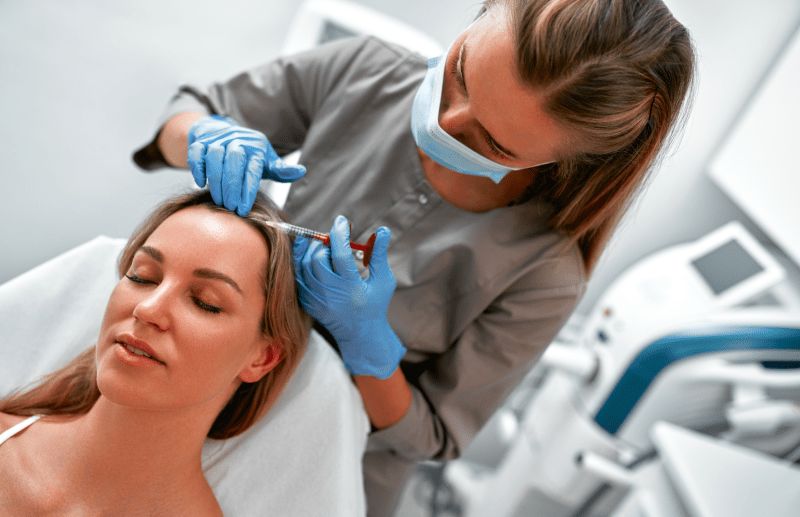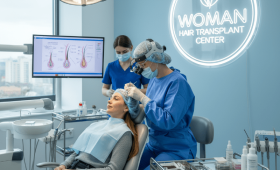Can Women Have A Hair Transplant And Is This Procedure Safe?
Yes, women can absolutely have a hair transplant, and this procedure is an extremely safe and effective solution when the correct diagnosis is made. Hair loss patterns in women are often different from men and can be in the form of diffuse thinning (diffuse alopecia). Therefore, donor area sufficiency and the selection of the correct technique are critical for a successful outcome.
Hair transplantation offers permanent solutions, especially for hair loss due to non-hormonal reasons and recession of the frontal hairline. As Cure Holiday, we prepare internationally standardized transplantation plans tailored to the anatomical and aesthetic expectations of our female patients. A comprehensive blood and hormone analysis before the surgery maximizes the safety of the procedure.
Are The Causes Of Hair Loss In Women Different From Men And What Is Its Effect On Transplantation?
The causes of hair loss in women are frequently different from men and typically stem from a wide range of factors such as hormonal fluctuations (menopause, pregnancy), thyroid problems, iron deficiency, stress, or autoimmune diseases, in addition to genetic predisposition.
Instead of the distinct baldness pattern seen in men (Norwood), hair in women generally thins out diffusely (Ludwig scale). Hair transplantation offers a permanent solution only in cases where the donor area is healthy and resistant to hair loss. In cases where hair loss continues, supportive treatments like PRP or mesotherapy may be needed after transplantation. Our specialists determine the suitability for transplantation by identifying the root cause of the hair loss.
Who Are The Most Suitable Candidates For Hair Transplant In Women And What Are The Criteria?
The most suitable candidates for hair transplant in women are generally those whose hair loss pattern is focused on a specific area (for example, noticeable recession in the temples or frontal hairline). The second suitable group is those who want to increase hair density despite diffuse hair loss and have a stable donor area.
Criteria include stabilization of the cause of hair loss, being over 18 years old, having a healthy donor area, and realistic expectations. For women with diffuse thinning and a weak donor area, transplantation may not be a suitable option. The Cure Holiday team objectively evaluates your candidacy with a detailed analysis.
What Is The Most Common Type Of Hair Loss In Women And Is It Suitable For Transplantation?
The most common type of hair loss in women is the diffuse thinning pattern (diffuse alopecia), which is the female pattern of Androgenetic Alopecia (Ludwig Scale). This pattern causes thinning across the entire scalp starting from the crown, although the hairline is often preserved. This situation is challenging for transplantation because it can also affect the quality of the donor area. However, if hair loss is concentrated only in specific areas or if the donor area is sufficiently dense, FUE or DHI techniques with existing hair can be utilized to improve density. Detailed planning is essential, as having fine hair may limit the number of grafts that can be transplanted.
Which Techniques Are Used For Hair Transplant In Women And What Are The Differences?
The most common techniques used for hair transplant in women are FUE (Follicular Unit Extraction) and DHI (Direct Hair Implantation). The FUE technique allows for transplantation in wider areas but may require partial shaving of the donor area. The DHI technique, on the other hand, offers the possibility of unshaven transplantation using a special pen (Choi implanter) and allows for denser and more natural transplantation among existing hairs. DHI is a minimally invasive method frequently preferred by women due to aesthetic concerns. Our specialists will decide on the best technique based on your hair loss type.
Is Shaving The Donor Area Really Mandatory For Women?
Completely shaving the donor area is not mandatory, but this depends on the transplantation technique used and the number of grafts to be transplanted. Techniques like Unshaven FUE or DHI specifically allow for a small part of the donor area to be partially shaved (concealed by existing long hair) or require no shaving at all, especially for women. This is very important for the patient’s quick return to social life. If a large number of grafts (e.g., 3000+) are required, full shaving may be necessary, but at Cure Holiday, methods that minimize aesthetic concerns are generally prioritized for women.
Is Unshaven Hair Transplant (Unshaven FUE) Possible For Women And How Successful Is It?
Yes, unshaven hair transplant (Unshaven FUE or DHI) is definitely possible for women and is frequently preferred as it accelerates the return to social life. In this technique, only the areas from which the grafts will be taken in the donor area are shaved, while the long hair above covers these areas. The success rate is as high as that of shaved FUE, but the number of grafts may be limited (generally around 1000-2000 grafts). Therefore, it is ideal for filling in sparse areas or reconstructing the frontal hairline. The suitability of this method depends on a detailed analysis of your existing hair density.
Are The New Hairs Obtained From Hair Transplant Permanent And How Long Do They Last?
The new hairs obtained from a hair transplant are considered permanent. This is because the hair follicles used as the donor area, located on the back and sides of the head, are genetically resistant to the male hormone (DHT). These resistant roots retain their resistance to hair loss even in the new transplanted area and are expected to continue growing for life. However, genetic hair loss may continue in the existing hair that was not transplanted. Cure Holiday encourages full compliance with post-operative care protocols to increase the long-term permanence of the transplanted hair.
Where Is The Best Donor Area For Hair Transplant In Women And What Should Be The Density?
The best donor area for hair transplant in women is generally the back of the head (nape area) and the sides above the ears. Hair follicles in these areas are the most genetically resistant to hair loss. The density of the donor area is a critical factor that directly determines the number of grafts that can be taken. A density of over 70-80 grafts per square centimetre in the donor area is considered ideal. If the density in the donor area is too low, the transplantation result will not achieve the desired density, posing a limitation. Our specialists will meticulously evaluate the quality of this region.
How Long After Hair Transplant Are Visible And Final Results Achieved?
Visible and final results after hair transplant appear gradually. Shock hair loss occurs in the transplanted hair within the first 3-4 weeks. New hairs generally start to grow after the 3rd month. 50% of the hair becomes visible at the 6th month, and the main thickening and density occur between the 9th and 12th months. The final and complete result may require waiting 12 to 18 months. This process requires patience, and Cure Holiday provides you with step-by-step support during this recovery period.
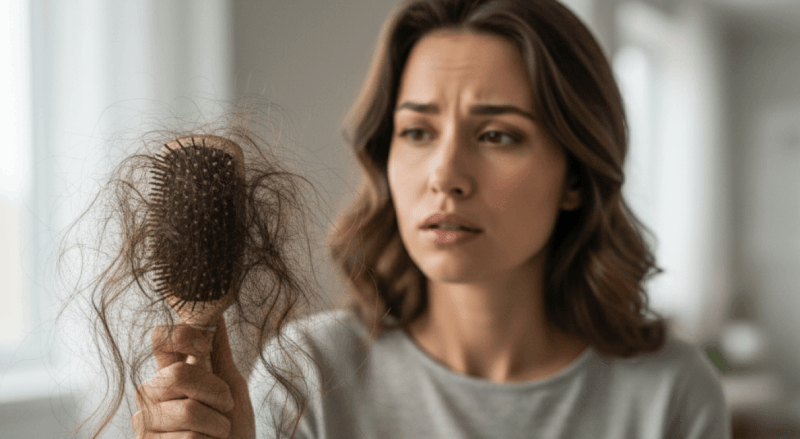
When Can Women Return To Work Life After Hair Transplant And What Should They Pay Attention To?
Women can generally return to work life after hair transplant within 3 to 10 days, depending on the technique applied. If unshaven DHI or partial shaving technique was applied, the return time is shorter (3-5 days) because the existing long hair covers the donor area. However, the complete disappearance of swelling (oedema) and redness in the forehead area can take 7-10 days. When returning to work life, it is crucial to protect the transplanted area from impact, avoid excessive sweating, and strictly follow the initial washing instructions.
Will There Be Pain Or Swelling After The Surgery And How Is It Managed?
No pain is felt during the hair transplant procedure because local anesthesia is used. In the post-operative period, there may be mild pain that can be easily managed with prescribed painkillers. Swelling (oedema), especially around the forehead and eyes, can last for 3-5 days. To minimize swelling, it is recommended to apply ice for the first 48 hours, keep the head elevated, and regularly use the prescribed anti-oedema medications. The expert teams at Cure Holiday provide a detailed protocol for pain and swelling management.
Are Hair Transplant Prices Different For Women And What Determines Them?
Hair transplant prices for women may be slightly different from the standard FUE procedure for men, due to the special techniques used. Techniques like unshaven DHI or partial shaving FUE, frequently preferred by women, may affect the cost as they require more time and meticulousness. Prices are determined according to the number of grafts to be transplanted, the chosen technique, the experience of the surgical team, and the international standards of the centre. Cure Holiday provides the most transparent pricing by offering high-quality service at competitive prices.
What Are The Advantages For Women Getting A Hair Transplant In Turkey And Why Should It Be Preferred?
The biggest advantages for women getting a hair transplant in Turkey are high level of expertise, aesthetic sensitivity, no waiting time, and cost-effectiveness. Turkish surgeons have gained international recognition for focusing on female hair loss patterns and aesthetic sensitivity requiring techniques like unshaven transplantation. The fact that prices are more affordable than in Western countries is also a significant advantage. Cure Holiday collaborates with centres that prioritize the privacy and aesthetic concerns of women, aiming for the best results.
Does The Hair Transplant Procedure Disrupt Hormonal Balance Or Affect Existing Hormonal Problems?
No, the hair transplant procedure does not directly disrupt the hormonal balance and does not negatively affect existing hormonal problems (thyroid, PCOS, etc.). Hair transplantation is only a tissue transfer procedure. However, if the patient has an uncontrolled hormonal imbalance, this situation may affect the resistance of new hair after transplantation or the thinning of existing hair. Therefore, treatment and control of hormonal imbalances by a specialist before transplantation are essential for a successful and permanent result.
Is Hair Transplant Performed During Pregnancy Or Breastfeeding And Why Is It Unadvisable?
Hair transplant is absolutely not recommended and is inadvisable during pregnancy and breastfeeding periods. Hormonal changes during these periods can temporarily alter the hair loss pattern and density, making it difficult to accurately predict the transplantation outcome. Most importantly, the local anaesthesia and subsequent medications used during the surgery may pass into breast milk, posing a risk to infant health. Therefore, it is advised for women to wait until the pregnancy and breastfeeding periods are over and their hormonal balance has returned to normal before getting a hair transplant.
Which Medical Tests Should Be Performed Before Hair Transplant And What Are Their Purposes?
A series of medical tests are performed before hair transplant to evaluate the patient’s general health status and suitability for transplantation. These include complete blood count, infectious disease tests like Hepatitis B and C, HIV tests, clotting tests, and especially for women, thyroid and basic hormone levels checks. The purpose of these tests is to determine surgical risks (bleeding, infection) and ensure that hormonal or nutritional causes underlying the hair loss are treated before transplantation.
How Is The Hairline Design Done In Women And How Is Naturalness Ensured?
Hairline design in women must be done in an extremely delicate and natural way suitable for facial features, forehead height, and the patient’s age. Instead of the sharp corners seen in men, the hairline in women should be more rounded, softly transitioning, and slightly irregular. Single grafts are used in the frontal line to ensure naturalness, and attention is paid to the angle and direction of hair growth. Cure Holiday specialists design a personalized line by analyzing the patient’s facial ratios, similar to digital smile design techniques.
When Can The Newly Transplanted Hair Be Safely Dyed Or Chemically Treated After Hair Transplant?
It is recommended to wait at least 4 to 6 months for the newly transplanted hair and scalp to fully heal after a hair transplant. The hair follicles and scalp are sensitive during the first few months. Chemical dyes and bleaches can damage these sensitive roots and negatively affect the success of the transplantation. After the 6th month, herbal and less chemical-containing dyes may be preferred, but waiting 1 year for heavy chemical processes is the safest approach. Contact of chemicals with the scalp must be absolutely avoided.
Are PRP Or Mesotherapy Effective With Hair Transplant In Hair Loss Treatments?
Yes, PRP (Platelet-Rich Plasma) and Mesotherapy treatments are highly effective when applied with hair transplant or before/after transplantation. These supportive treatments nourish the hair follicles, increase blood circulation, and increase the survival rate of the transplanted grafts. Furthermore, they can help strengthen existing hair, reduce thinning, and shorten the shock hair loss period. PRP is the most natural supportive method as it contains growth factors derived from the patient’s own blood and is frequently included in transplantation packages at Cure Holiday.
What Is Shock Hair Loss After Hair Transplant And When Does It End?
Shock hair loss after hair transplant means that the transplanted hair follicles enter the resting phase (telogen) and shed the hair shafts during this process. This is an expected and temporary condition. It usually begins 2 to 4 weeks after the surgery and lasts for a few weeks. This shedding does not mean the roots have died; on the contrary, it indicates that the roots have adapted to their new location and will produce stronger new hair shafts after a few months. It is very important not to panic and to be patient during this period.
How Long Does It Take For The New Hair To Thicken And Become Dense After Hair Transplant?
The new hair shafts that emerge after a hair transplant may initially be fine, weak, and colourless (vellus). It takes time for these hairs to thicken, mature, and reach their final density. The diameter and density of the hair shafts generally begin to increase significantly after the 6th month and reach their full thickness between the 12th and 18th months. Taking regular vitamin and mineral supplements and eating healthily during this process contributes significantly to strengthening the hair follicles.
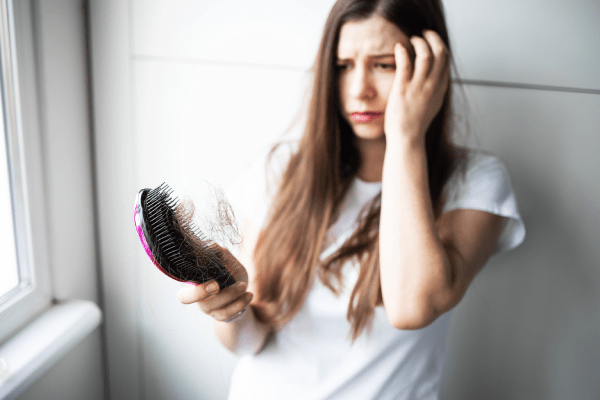
How Is The Direction And Naturalness Of Transplanted Hair Ensured In Women And Why Is This Vitally Important?
The direction and naturalness of the transplanted hair in women are vitally important, just as much as the number of grafts transplanted. The natural exit angle and direction of the hair (usually 40-45 degrees) must harmonize with facial expressions and forehead movements, especially in the frontal hairline and crown area. The surgeon places the grafts into very small and angled channels to achieve a natural appearance. Incorrect direction can result in the hair looking wispy and artificial. Cure Holiday specialists use specific transplantation angles that mimic the hair growth pattern to guarantee a natural look.
Does The Hair Need To Be A Certain Length For Hair Transplant And Why?
The hair in the donor area (if unshaven transplantation is not to be done) does not need to be very short for a hair transplant, but a length of 3-4 mm is ideal for the grafts to be easily visible and harvested. The existing hair in the recipient area is advised to be left long (unshaven technique) to avoid damaging existing roots during transplantation and to catch the correct angles. For women, the existing long hair is used to cover the partially shaved donor area, which is aesthetically important.
How Should I Protect Myself Against The Sun After Hair Transplant And For How Long Should I Be Careful?
The transplanted and donor areas after a hair transplant are extremely sensitive to the sun, and excessive sun exposure increases the risk of pigmentation (spots) or root damage. Therefore, direct sunlight must be absolutely avoided for the first 1 to 3 months after the surgery. Wearing a hat recommended by your doctor (usually a loose bucket hat) when going outside is mandatory. Paying attention to sun protection is important for preserving the quality of the transplantation result and skin health.
What Should Be Done If The Hair Transplant Fails Or Is A Second Transplant Possible?
Hair transplant rarely fails completely, but if the desired density is not reached or if asymmetry occurs, a second transplant (revision) is possible. Whether a second transplant can be done depends on the remaining density and quality of the donor area. At least 12 months should be waited before deciding on a second transplant, and the final result of the first transplant should be assessed. In case of failure, Cure Holiday evaluates the situation according to international standards and offers revision or alternative treatment options.
When Does Scalp Sensitivity And Numbness Disappear After Hair Transplant?
It is normal to experience temporary sensitivity, tingling, or numbness in both the donor and recipient areas after a hair transplant. This condition is caused by the temporary effect on the nerve endings during graft harvesting. While sensitivity usually decreases within a few weeks, the complete disappearance of full sensation and numbness can take 2 to 6 months. This is part of the healing process, and permanent nerve damage is extremely rare.
Can Hair Transplant Be Done After Forehead Reduction Surgery And How Does The Process Work?
Yes, hair transplant can be done after forehead reduction (forehead lowering) surgery, but the order of these two procedures is important. If the hair line density is deemed insufficient after the forehead lowering surgery, the frontal line can be intensified with a hair transplant after the post-operative recovery is complete (usually 6-12 months later). This combined approach reduces forehead height while ensuring the aesthetic and natural appearance of the hairline. Our expert surgeons guide you in planning this combined procedure.
Is Eyebrow Or Eyelash Transplant Possible In Women And What Kind Of Expertise Does It Require?
Yes, eyebrow transplant for sparse or misshapen eyebrows in women and, rarely, eyelash transplant are possible. Eyebrow transplantation is performed by transplanting fine hair follicles taken from the donor area using the FUE technique into the eyebrow area. This procedure requires more aesthetic sensitivity and millimetric angle adjustment than hair transplant, as the exit direction of the eyebrow hairs is critical. Eyelash transplantation is a rarer and more challenging procedure. Cure Holiday works with specially trained surgeons who can perform such delicate aesthetic transplants.
Which Other Supportive Treatments Are Recommended Along With Hair Transplant?
Supportive treatments such as PRP (Platelet-Rich Plasma), hair mesotherapy, and low-level laser therapy (LLLT) are generally recommended to increase the success of hair transplant and strengthen existing hair. These treatments support faster hair growth, thickening, and increased resistance to hair loss by directly providing hair follicles with the necessary vitamins, minerals, and growth factors. These treatments are especially important for women with a risk of continued genetic hair loss, and are frequently included in transplantation packages at Cure Holiday.
When Can Hair Styling Products Be Used After Hair Transplant?
The use of hair styling products (spray, gel, mousse) after a hair transplant should be absolutely waited for the first 3 to 4 weeks. These products can accumulate in the transplanted area, clog pores, prevent the roots from breathing, and increase the risk of infection. Light products applied only to the hair shafts and not contacting the scalp can be started at the end of the first month. However, waiting at least 6 months for chemical-containing products that contact the scalp is the safest approach.
When Is The Use Of Sauna Or Pool Safe After Hair Transplant?
It is recommended to wait at least 4 weeks for the use of sauna, Turkish bath, or swimming pool/sea after a hair transplant. Sauna and Turkish bath can cause excessive sweating and opening of pores in the transplanted area, increasing the risk of infection. Pool and sea water, containing chlorine or salt, can slow down wound healing and lead to infection. During this period, even when showering, direct pressure on the scalp should be avoided.
What Is The Ideal Donor Area Density And Graft Count For Hair Transplant In Women?
The ideal donor area density in women is accepted as 70-80 follicular units per square centimetre and above. This density is important to prevent permanent thinning in the donor area after transplantation. The number of grafts transplanted in a single session in women may be more limited than in men due to diffuse thinning, usually planned between 1500 and 3000 grafts between the existing hair. Excessive graft harvesting can cause permanent thinning of the donor area, so specialists prioritize the preservation of the donor area.
Is DHI Technique Suitable For Transplanting Into Sparse Hair And What Is Its Advantage?
Yes, transplanting into sparse hair with the DHI (Direct Hair Implantation) technique is one of the most suitable approaches. The biggest advantage of DHI is that it offers the possibility of transplanting more densely between existing hair follicles without damaging them, thanks to its special pen. This is ideal for areas in women where there is diffuse thinning and existing hair needs to be preserved. Eliminating the necessity of shaving is also a great aesthetic advantage. Cure Holiday works with teams specialized in DHI to densify sparse hair.
Is The Use Of Vitamins And Supplements Required After Hair Transplant And Which Vitamins Are Important?
Yes, hair transplant after vitamin and special supplement use is generally recommended and is important for strengthening the new hair roots. Important vitamins include Biotin (B7), Zinc, Iron, Folic Acid, and B Group vitamins. These supplements support faster hair growth, thickening, and increased resistance to hair loss. However, consulting your doctor and acting according to your blood values before starting any supplement use is the most correct approach.
How Does Genetic Hair Loss (Androgenetic Alopecia) Affect Transplantation In Women?
If women have genetic hair loss (Androgenetic Alopecia), transplantation provides permanent results only for grafts taken from the donor area resistant to hair loss. However, hair loss may continue in the existing hair that was not transplanted. This situation can create a difference in density in the long term. Therefore, in women with genetic hair loss, drug treatments like Minoxidil or supportive methods like PRP are recommended in combination after transplantation to slow down hair loss and preserve existing hair.
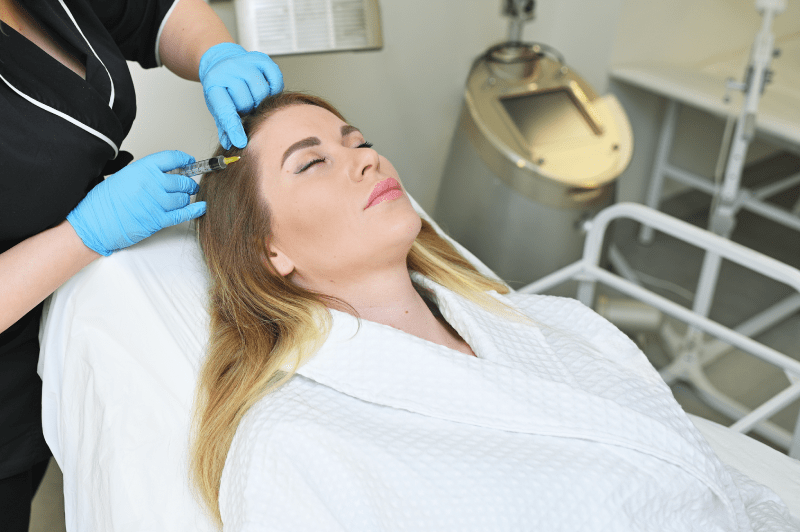
How Should The Hair Washing Procedure Be Done After Hair Transplant And Which Products Should Be Used?
The hair washing procedure after a hair transplant should be done only in a clinical setting or under expert supervision, 24-48 hours after the surgery. A special shampoo and lotion will be provided for washings after the first wash. Washing should be done gently, with circular movements, and with low-pressure water; rubbing or touching the transplanted area with nails is strictly forbidden. Strict adherence to this delicate washing technique for the first 10 days is vital to prevent the grafts from being dislodged.
What Are The Satisfaction Rates Of Women Who Have Had Hair Transplant In Turkey And Why Are They High?
The satisfaction rates of women who have had hair transplants in Turkey are quite high. The main reasons for this satisfaction are the aesthetic sensitivity of expert surgeons, their ability to achieve natural and especially unshaven results, the rapid completion of the operation, and the ability to receive high-quality service at an affordable cost. Patients working with firms like Cure Holiday also report high satisfaction due to logistical comfort such as accommodation and interpreter support.
Is Headache Or Numbness Experienced After Hair Transplant Normal And When Does It Go Away?
Mild headache or numbness in the donor area experienced after a hair transplant is normal due to the effect of local anesthesia and the surgical procedure. Headache is usually controlled with prescribed painkillers within the first 24-48 hours. Numbness in the donor and recipient areas gradually disappears, usually within a few weeks to a few months, parallel to the healing of nerve endings. Permanent pain or numbness is extremely rare.
What Should Be The First Step To Start The Hair Transplant Process And How To Contact?
The first and most important step to start the hair transplant process is to contact Cure Holiday. Our team will request a few photos of your existing hair loss pattern (front, crown, back) and your medical history. This information is forwarded to our expert surgeons for a free preliminary evaluation and personalized graft analysis. This initial contact is vitally important for determining your suitability for the surgery, selecting the correct technique, and safely creating your entire travel plan.
Which Criteria Are Used To Evaluate The Success Of Hair Transplant In Women?
Criteria used to evaluate the success of hair transplant in women include density (number of hair shafts per cm²), the naturalness of the hairline and direction, the preservation of the donor area, and most importantly, the patient’s psychological satisfaction. A successful transplant means not only the growth of a sufficient amount of hair but also the transplanted hair harmonizing with the existing hair and aesthetically complementing the person’s facial features. Final results are evaluated according to these criteria after 12-18 months.
When Do The Scabs And Redness On The Scalp Disappear After Surgery?
Scabs (consisting of dried blood and tissue fluid) and redness that form in the recipient area after a hair transplant are expected conditions. Scabs generally shed completely at the end of the 10-day special washing procedure. The redness that appears after the scabs shed is caused by intensified blood circulation and gradually fades and disappears within a few weeks to 2 months, depending on the skin type. Premature shedding of the scabs by scratching must be absolutely avoided.
Is The Existing Hair In The Transplanted Areas Damaged?
If not performed with the correct technique and by an experienced surgeon, the existing hair in the transplanted area may be damaged (other than shock loss). This can happen when transplanting with the Unshaven DHI technique, where the roots are approached closely. Experienced specialists use the “lateral slit” technique or the DHI pen delicately to transplant into the gaps between existing roots and minimize this risk. Preserving existing hair is vitally important for a natural look in women.
Which Hair Styles And Cuts Are Recommended After Hair Transplant?
After a hair transplant, loose, natural hairstyles that do not put pressure on the transplanted area and do not strain the hair follicles are recommended for the first 6 months to support the growth and thickening process of the new hair. After the hair is fully matured (12th month), the desired hair cut and style can be chosen. However, it is advised to avoid models that create tension, such as very tight ponytails or buns, for a long time to protect the sensitivity of the newly transplanted hair.
Which Accredited Clinics Should Be Preferred For Hair Transplant In Turkey?
For hair transplants in Turkey, hospitals with international accreditations like JCI (Joint Commission International) and clinics that provide service according to these standards, possessing international certificates, should be preferred. These accreditations indicate that the centre maintains high standards in terms of hygiene, patient safety, technical equipment, and personnel quality. Cure Holiday collaborates only with centres that have successfully passed such audits and adhere to ethical rules, guaranteeing patient safety.
What Are The Travel Restrictions After Hair Transplant And When Can I Fly?
Travel restrictions after a hair transplant are generally minimal. Patients can usually travel by plane 1 or 2 days after the surgery. The most important point to pay attention to during travel is protecting the transplanted area from any impact or friction (for example, when leaning against the airplane seat). Cure Holiday’s organized transfers take this sensitivity into account. If any special medication or headwear needs to be taken before and after the flight, your surgeon will inform you.
How Is Minoxidil Or Other Medication Use Adjusted Before Hair Transplant In Women?
If a female patient is using topical hair loss medications like Minoxidil before the hair transplant, this medication must be discontinued at least 10 days before the surgery. This is because Minoxidil can increase the risk of bleeding during and after the surgery by dilating blood vessels. Information about other medications (e.g., hormone or thyroid medications) should also be provided to the surgeon, and usage adjustments should be made collaboratively. Correct compliance with the medication regimen increases surgical safety.
